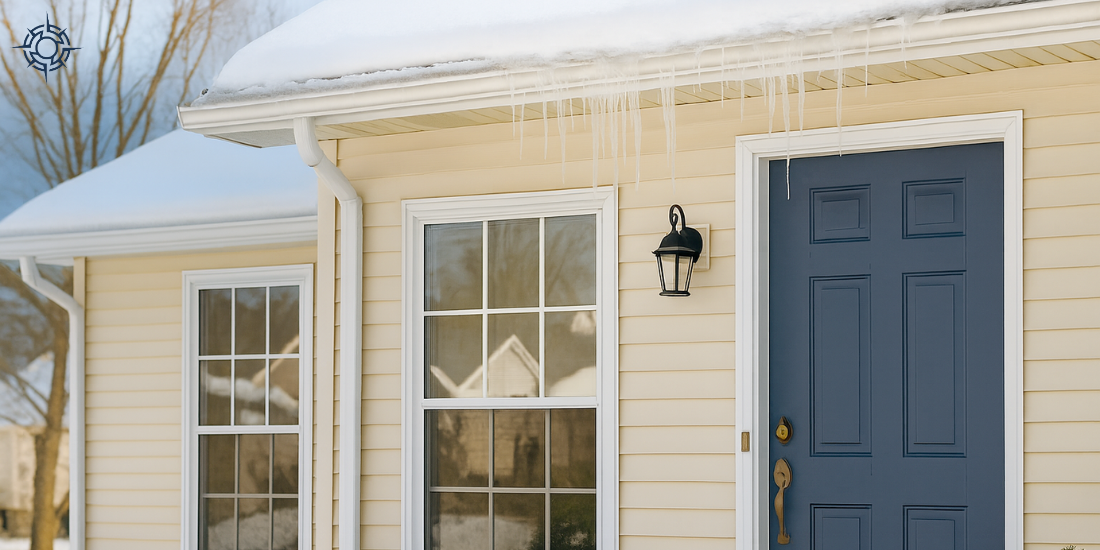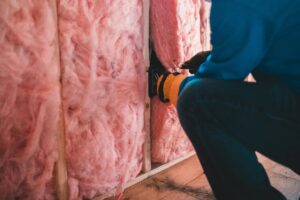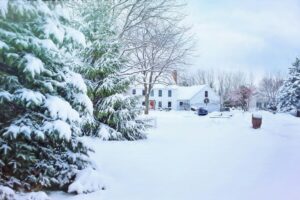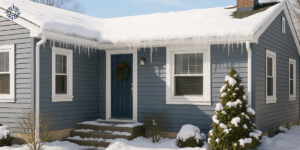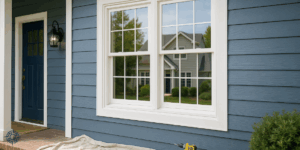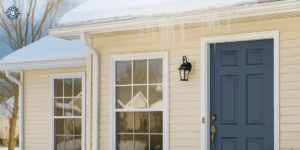Every Minnesota winter, 1 in 4 homes experiences ice dams — ridges of ice that form on the edge of roofs. Left unaddressed, the resulting water damage can cost homeowners up to $50,000 in repairs, from soaked insulation to ruined drywall and structural rot. Even more concerning, studies show that 80% of ice dams are caused by poor insulation and ventilation — meaning they are largely preventable.
This guide explains what causes ice dams, how inadequate attic insulation also fuels mold growth, and the most effective strategies homeowners can use to stop these cold-weather hazards before they cause lasting damage.
What Causes Ice Dams?
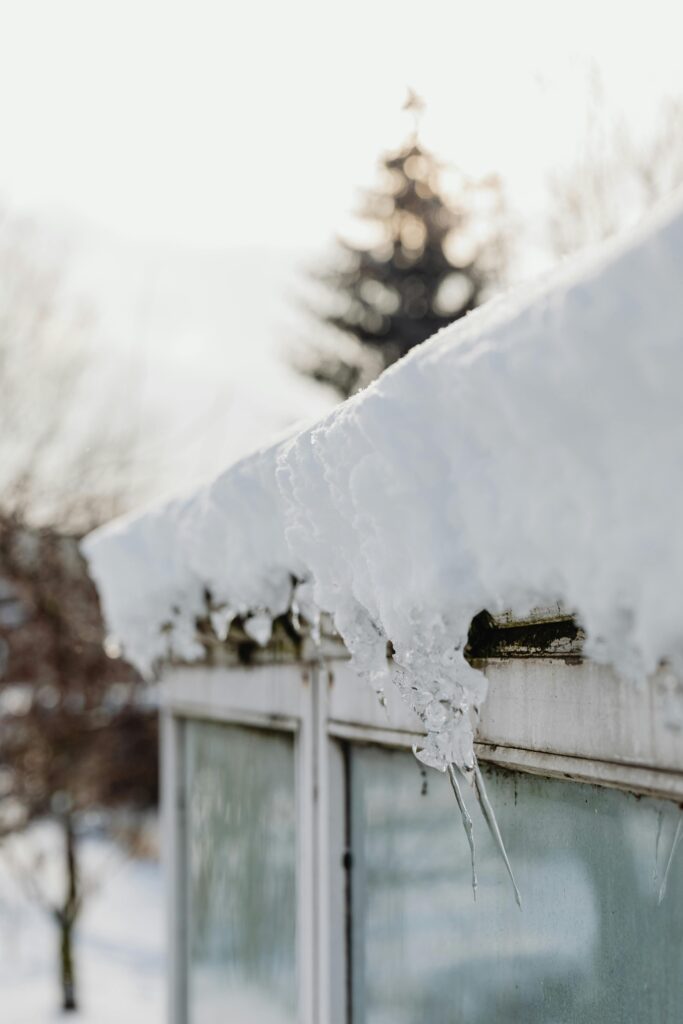
To understand prevention, it helps to understand the process:
- Heat Escapes into the Attic – When your attic is under-insulated, warm air from your living space rises and seeps through gaps, cracks, or thin insulation layers.
- Snow Melts on the Roof – The warmed roof surface causes the bottom layer of snow to melt.
- Water Refreezes at the Eaves – At the unheated roof edges, the melted water refreezes, creating an ice ridge.
- Water Backs Up – With nowhere to go, new meltwater pools behind the ice dam, seeping under shingles and into your home.
The result? Water stains, sagging drywall, damaged insulation, and structural weakening. Ice dams aren’t just inconvenient; they are a costly chain reaction set in motion by poor thermal management.
How Poor Insulation Leads to Mold Growth
Insufficient attic insulation doesn’t just create ice dams — it also fosters mold growth. Here’s how:
- Moisture Trapping – When warm indoor air escapes into a cold attic, condensation forms on rafters and insulation.
- Organic Fuel – Mold thrives on wood sheathing and paper-backed insulation.
- Ventilation Failure – Without proper airflow, spores multiply in damp corners, leading to colonies that spread quickly.
Mold isn’t just a cosmetic issue. It can cause respiratory problems, allergies, and long-term health issues, while also compromising the structural integrity of your roof. Proper attic insulation and ventilation prevent both ice and moisture buildup, keeping your home healthy year-round.
Core Strategies for Ice Dam Prevention
1. Improve Insulation Levels
- Minnesota attics should typically meet R-49 to R-60 insulation standards.
- Fiberglass batts, blown-in cellulose, or spray foam can be used to bring insulation up to code.
- Adequate insulation keeps heated air in your living space and your roof surface cold, reducing melt cycles.
2. Seal Air Leaks
- Air leaks are often overlooked but play a major role in warming attic air.
- Common culprits: chimneys, recessed lighting, ductwork, and attic hatches.
- Use spray foam or caulk to seal penetrations. Weatherstripping around attic doors is also effective.
3. Add Proper Vapor Barriers
- Vapor barriers keep warm, moist air from migrating into insulation and condensing.
- A polyethylene sheet or specialized vapor-retardant paint can be installed beneath insulation layers.
4. Ensure Adequate Ventilation
- Even with proper insulation, warm air will still find its way into the attic. That’s why balanced ventilation is critical.
- Soffit vents allow cool air to enter, while ridge vents allow warm air to escape.
- Without this balance, hot spots form, creating localized melting and damming.
5. Use Ice Dam Prevention Products as Supplements
- Heated cables, salt socks, or ice melt tablets can reduce buildup in the short term.
- However, these products treat symptoms, not causes. True prevention comes from insulation and ventilation improvements.
Checklist of Warning Signs
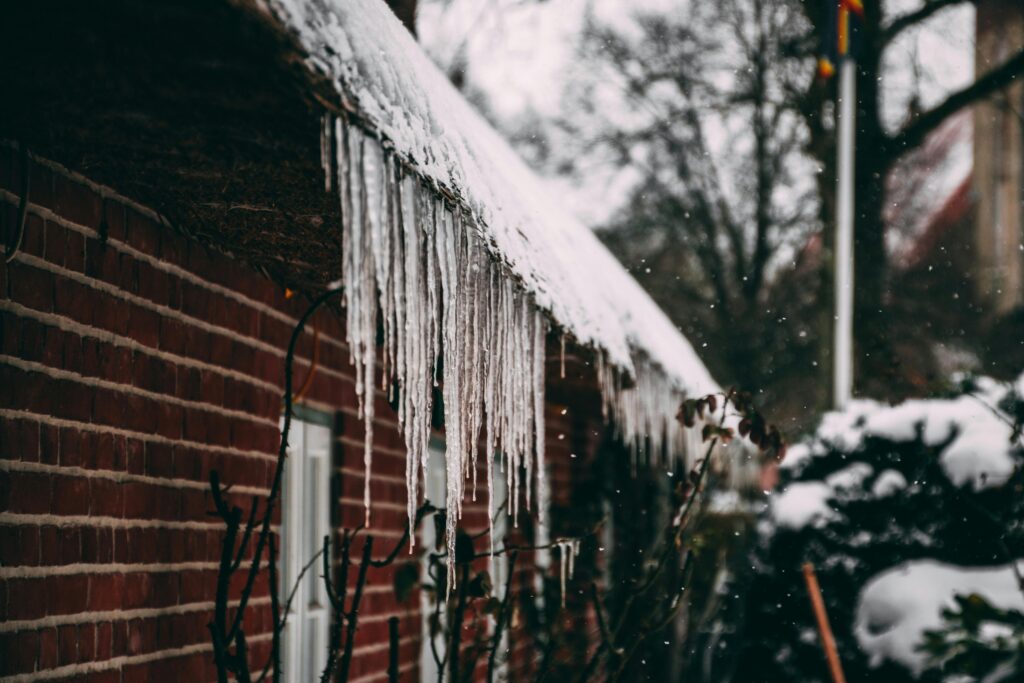
You may already have insulation or ventilation issues if you notice:
- Uneven Snow Melt: Bare patches on some roof sections while others remain covered.
- Icicles Forming at Eaves: A telltale sign of melt-refreeze cycles.
- Water Rings on Ceilings: Moisture seeping into drywall.
- Peeling Paint or Bubbling Plaster: Caused by trapped water vapor.
- Musty Odors in Attic: Early mold colonization.
What to Do If You Already Have Ice Dams
If prevention slipped through your hands this winter, here’s how to manage ice dams safely:
- Roof Raking: Use a long-handled roof rake to remove snow from the first 3–4 feet of your roof after storms.
- Salt Pucks or Ice Melt Socks: Place along the edge to create melt channels. Use calcium chloride, not rock salt, which can damage shingles.
- Call Professionals: Steam removal and safe clearing are the best long-term fixes if dams have already formed.
- Avoid DIY Chipping: Using hammers or chisels can damage shingles and void warranties.
Long-Term Benefits of Proper Attic Insulation
- Lower Heating Bills: A well-insulated attic reduces energy waste and keeps heat where you need it.
- Improved Comfort: Fewer drafts, more even room temperatures.
- Structural Protection: Prevents both water infiltration and mold growth, safeguarding long-term resale value.
Call Compass Exteriors
Ice dams and mold don’t have to be part of your Minnesota winter story. By investing in proper attic insulation and ventilation, you can protect your home from costly damage while improving energy efficiency. Contact Compass Exteriors today to schedule an attic insulation assessment and enjoy peace of mind this winter.

